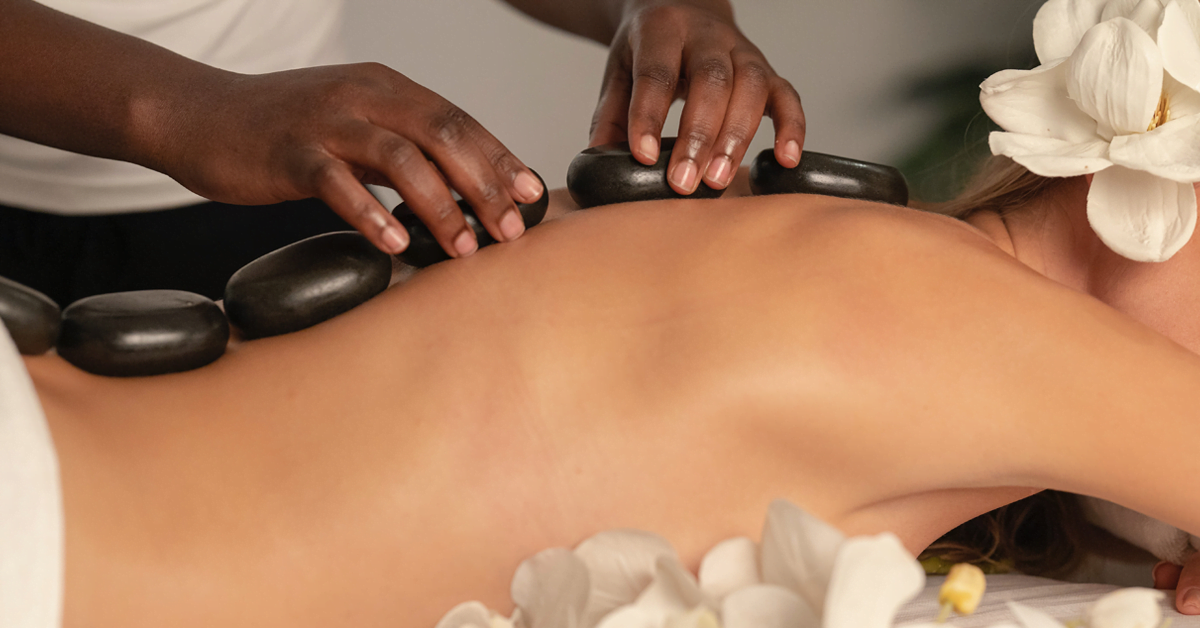Swedish vs. Deep Tissue Massage: Which One is Right for You?
Swedish & Deep Tissue massages are well-known kinds of massage that differ in many ways. Unlike deep tissue massage, Swedish massage uses light to moderate pressure and gentle movements to calm the nerves and free muscles from tension. Working on muscle layers in a sophisticated way uses more pressure and hence effectively relieves chronic pains. Which of these massages is to be chosen depends on the desires and requirements, if one needs a rest or to alleviate the pain. , but both have their advantages and many therapists can structure sessions in a way that incorporates aspects of both.
Introduction
Remedial touch has been accepted from time immemorial as one of the most effective and efficient ways of supporting the body to relax, receive its treatment, and rebuild. Time, pressures, tensions, etc. are parts of life that cannot be avoided in the modern world, and stressless, good massage is unoverstateable. However, since one gets to choose from such a huge array of massage styles, it could prove quite inconvenient to determine which of the styles could suit the needs of an individual best. It is worth mentioning that two general categories of massage are widely known today: these two are Swedish massage and Deep Tissue massage.
What is Swedish Massage?
Swedish massage is one of the most popular and extensively used massage therapies in the USA and Europe. This massage style comes from Sweden: it was started by Dr. Per Henrik Ling, in the early part of the nineteenth century. This is mainly to do with recreation and the circulation of blood and bodily health.

Techniques used in giving Swedish massage
Swedish massage is usually given with several objectives of massaging that of relaxation of muscles and improvement of blood circulation. The main techniques include:
- Effleurage: Large widening how that enables the muscles to be relaxed and any build-up tension to be released.
- Petrissage: There are various methods including the smoothening of the muscles and the rolling movement which assist or ease stiffness and enhance the blood flow in the muscles.
- Tapotement: Quite a gentle method of twisting the muscles and nerves of a certain part of the body by stroking it with the side of the hand or with the tips of the fingers.
- Friction: Any exercising, which calls for circular and deep movements to facilitate mobilization of the affected tissue in a bid to eliminate adhesions.
- Vibration: Swinging to be very certain that all muscles are relaxed so that no muscle tension is left behind.
They are performed at light pressure to make the session a therapeutic one and very soft on the skin.
Benefits of Swedish Massage
The benefits that come with Swedish massage are numerous; hence it is very popular when it comes to helping a person relax. Some of the key benefits include: Among the benefits of the use of EBP are the following:
- Stress Reduction: Intended is a light pressure with rubbing motion; this is because it helps to calm the nervous system’s stress and anxiety.
- Improved Circulation: This is because such a form of massage enables the oxygen and nutrients to get to the muscle and the body tissues hence enhancing the body’s health.
- Enhanced Flexibility: Swedish massage is well tolerated and it can be done frequently this will help one to enhance his or her flexibility to support the person in mobility and productivity in the activity.
- Pain Relief: While it was seen that the effect of deep tissue mass, however, the Swedish massage came to be useful in the alleviation of pains and stiffness of muscles but was found to be effective for mild to moderate.
- Mental Clarity: Swedish massage leads to relaxation of muscles hence the recipient is most likely to have better concentration capability.
Common Misconceptions
However, there are several myths people have about Swedish massage, For instance. Another myth is that it’s only about rest and not about solving a physical problem. It is possible to apply Swedish massage according to the localized areas of discomfort; thus, alternating between deep relaxation and therapeutic enjoyment.
What is Deep Tissue Massage?
Deep tissue massage is also referred to as a structural massage and is more rigid compared to normal massage since it works with the deeper layers of muscles and connective tissues. It is commonly applied in the treatment of chronic pains, muscle rigidity, and injuries. Deep tissue massage on the other hand is not a relaxation technique as is Swedish massage but it is about treatment and training.

The techniques that are used in a deep tissue massage include the following;
Some of the approaches used in deep tissue massage are similar to that of Swedish massage but with more pressure, and at a slower speed. Key techniques include:
- Stripping: Slow deep friction spread evenly along the direction of the muscle fibers in the affected area.
- Friction: Fundamental, strong circular motion that can separate thickened and contracted scar tissues and adhesions.
- Cross-fiber friction: Making repetitions with pressure applied across the fibers in a direction towards the center of the muscle.
- Compression: Applying force on the muscles in a section to extend and release them, normally with elbows and/or forearms.
They are intended to reach through into the muscula and fascial levels and release the pain or tension that is sustained.
Deep Tissue: Attributes and Significance
Some of the profound that deep tissue massage offers are as follows; it is advantageous to a client who has chronic pain or muscle injuries. Some of the key benefits include:
- Chronic Pain Relief: Most particularly, it has been established to be highly efficient in the treatment of chronic pains that affect the muscles and joints of the neck, shoulders, and lower back.
- Injury Recovery: This kind of massage is special and useful in the treatment of any kind of injury because it assists in breaking the scar tissues to facilitate movements.
- Improved Posture: In helping the body postural problems, this technique aids in muscle relaxation and exercises pressure on the body part.
- Increased Range of Motion: As a result of the large amount of pressure used in treating deep tissue massage the muscles tend to become short-tanned and are then put through a stretching process.
- Stress Relief: To that effect, though it might be even more invasive and therefore potentially painful, there is merit to deep tissue massage for purposes of stress relief, especially if one has tight muscles.
Common Misconceptions
Another myth about deep tissue massage is that it must always be painful- or that one should not feel any pain when going for the kind of massage. This is true though deep tissue massage can be quite tender compared to Swedish massage; your massage therapist will with tenderness special to your body to avoid causing pain though necessary for the health of the body.
Key Differences Between Swedish and Deep Tissue Massage
Swedish and deep tissue massage are two major categories of massaging therapy and there are the following differences:
Before deciding whether to go for Swedish or deep tissue massage, it is imperative to appreciate the difference between the two.
Pressure Intensity
- Swedish Massage: This is usually performed using light to moderate pressure thus most people find it more relaxing than others.
- Deep Tissue Massage: This is a higher level of pressure targeting and penetrating the deeper tissues of muscles and fascia.
Techniques and Movements
- Swedish Massage: Long glutinous glide accomplished with shipping, pounding, and jiggling to work on the sluggish muscle circulation functions.
- Deep Tissue Massage: Concentrated on slow and deep pressure and rubbing of muscles that are soaked in pain and tension for many days.
Areas of Focus
- Swedish Massage: Usually treatment is applied to the entire body, the main focus is on the client’s comfort.
- Deep Tissue Massage: Frequently designed for certain parts of the body, which are the most painful or sore usually the neck, shoulders, or the lower back.
Duration and Session Structure
- Swedish Massage: There are normally one to an hour and a half sessions and the massage is normally sequential from head to toe.
- Deep Tissue Massage: Sessions also may take 60 to 90 minutes, however, they are more concentrated on some more problematic areas.
Pain and Discomfort Levels
- Swedish Massage: Most of the time not painful and easy to tolerate, if there is any sensation of pain at all.
- Deep Tissue Massage: This might be painful at times depending on the sensitivity that the client has on the various areas affected by the therapist rubbing the muscles and bands.
Quick Comparison Chart: When to go with Swedish Massage
There is no environment in which Swedish massage can be considered contraindicated and is especially beneficial where the situation entails a goal of relaxation.
Conditions which are best suited to offering Swedish Massage
- For example after a week’s work or if one has encountered a stressful event a Swedish massage can be of assistance in relaxing.
- Even more so, first-time massage clients ought to start with Swedish massage because they are comparatively mild.
- Hence, for those of the clients who seem to be rather sensitive about the forces applied to their skin, and who prefer getting massage sessions not very hard, the Swedish masse is comfortable following the type of massage.

Particular Physical and Mental Disorders for Which Swedish Massage is Suitable
- Stress and Anxiety: Among the benefits that could be received from the Swedish massage one can mention the observed significant decrease in stress levels as well as the enhancement of the powers of concentration.
- Mild Muscle Pain: For instance, if you are having mild muscle pains or stiffness, when using Swedish massage the pains are eliminated without them being worsened.
- Insomnia: Swedish massage relieves tension and stress that affects the quality of sleep hence it can be useful to those with sleepless conditions.
Predictors and Relaxation Requirements of Life Styles
- If you, however, want a massage that is as if you are being ‘spoon-fed’, then Swedish massage will suit you best.
- For individuals who do not require any specific treatment and those who wish to take it easy and remain in the best condition, then Swedish massages are very beneficial to incorporate into one’s lifestyle.
When to Choose Deep Tissue Massage
It is most suitable for general relaxation and those who don’t necessarily require rigorous work done on their body as opposed to deep tissue massage which is ideal for people with definite problems that need working on.
Ideal Scenarios for Deep Tissue Massage
- People who have pain, that is continuous or muscular ongoing, get help from deep tissue massage.
- For individuals who have experienced an injury or who have undergone surgery, Deep Tissue Massage is used in the healing process since it assists in breaking down the scars and increasing mobility.
- Anybody in sports or an exerted worker may need deep tissue massage to help rejuvenate the muscles as well as avoid getting an injury.

Physical and Mental Conditions Best Suited for Deep Tissue Massage
- Chronic Pain: Deep tissue massage will go a long way in providing relief for anyone with ailments such as fibromyalgia, sciatica, and lower back pain among others.
- Injury Recovery: People who are undergoing rehabilitation from athletic injuries, operations, or other types of people trauma may benefit from deep tissue massage in the process of nursing.
- Posture Issues: Using deep tissue massage is quite helpful if you have shoulder posture issues or other posture issues like forward head posture.
Personal Preferences and Therapeutic Needs
- Nevertheless, if you need a very forceful massage, then deep tissue massage is the one you need.
- Hence for anyone looking for a remedial massage that is centered on the provision of deep tissue massage, this could seem more appropriate.
Comparing the Benefits
Swedish and deep tissue are both effective relaxation techniques with their differences, therefore the choice is up to the client.
Swedish Massage and its Health Effects
- Reduced Stress: Swedish massage is among the best ways of managing stress because it has a way of reducing cortisol levels in the body.
- Improved Circulation: With Swedish massage, the strokes are lighter, and it raises blood flow so in turn, energy level and health are boosted.
- Enhanced Flexibility: It can also be very effective in maintaining the flexibility of the joints besides the muscles for a longer time when one is under a consistent schedule of Swedish massage.
Deep tissue Massage and its Health Effects
- Chronic Pain Relief: It is most effective for those clients who complain of chronic pain.
- Injury Recovery: Some of the benefits arising from deep tissue massage are that it reduces and breaks down the scar tissues hence promoting faster healing from an injury.
- Postural Improvement: Precisely, deep tissue massage can assist in restoring some postural distortions which in turn can decrease tension in the body and will not allow the development of some problems.
Which Massage is Better for Specific Conditions?
- Stress and Relaxation: Swedish massage is most suited for the treatment of general relaxation and stress-related problems.
- Chronic Pain and Tension: In the long term pain, muscle tightness, and the presence of knots are better resolved using deep tissue massage.
- Injury Recovery: For individuals who have sustained injuries or have undergone surgeries, deep tissue massage will be of more benefit to them.
Personalizing Your Massage Experience
For one to get the benefit of the massage, the individual has to relate with his or her therapist and get the massage tailored.
How to Speak to Your Therapist
- Be Honest About Your Needs: You should also inform your therapist about any concerns or problems you have before the session in question.
- Discuss Pressure Preferences: Regardless, it is pertinent that your therapist should know how much pressure you would like applied in the massage session.
- Provide Feedback: It is not only permitted but encouraged to interrupt the masseuse during the massage session if something is uncomfortable, or if you feel the masseuse is using too much pressure.
Making the Massage as Perfect as You Need
- Target Specific Areas: If certain regions in your body have tension more so in the shoulders, and lower back among others ask your therapist to target those regions.
- Blend Techniques: Same day, many therapists can use both methods in one session, thus way ensuring the best therapy for your body.
Combining Swedish and Deep Tissue Techniques
- A Balanced Approach: Some therapists integrate both Swedish and deep tissue; they use Swedish initially and then progress into deep tissue massage.
- Customized Pressure: One can tell your therapist to apply pressure to certain areas where you feel aches or pains and at the same time tell your therapist to apply less pressure on other areas.
Common Myths About Swedish and Deep Tissue Massage
One of the major confusion that one may have is whether to go for Swedish or deep tissue massage and this is because there are several myths about the two that may confound one when deciding on which one to go for.
Myth: Deep Tissue Massage is Always Painful
- Reality: Compared to deep tissue massage, it might be more painful but should not cause unbearable pain. Any good therapist will use the amount of pressure you are comfortable with.
Myth: After They Found Out That Swedish Massage Is Only for Relaxation
- Reality: Swedish massage in general is more enjoyable and only if carried out properly can assist in relieving pains and stimulating blood circulation.
Myth: Choosing from this type of perspective, you can only make one type of decision.
- Reality: You do not have to make a sometimes painful decision between a Swedish and Deep Tissue massage. In today’s practice, most therapists provide both ways to allow you to choose the most appropriate one for your case.
Myth: Library Articles show that Swedish Massage has Little to no Impact on Pain.
- Reality: Swedish massage is helpful for moderate and mild pain and when administered with other treatment procedures.
Case Studies and Testimonials
It is possible to give several examples that will describe the advantages of Swedish and deep-tissue massage in detail.
Personal Stories of Swedish Massage Benefits
- Case Study 1: The first real-life experience is an account of the effect of regular Swedish massages on the lifestyle of a busy executive.
- Case Study 2: Swedish massage and its role in flexibility maintenance and arthritic pain relief – a senior citizen’s story.
Personal Stories of Deep Tissue Massage Benefits
- Case Study 1: A sportsman gives an account of how a deep tissue massage aided him in the healing process of a sports-related injury and going back to practice.
- Case Study 2: I have had lower back pain for many years and patient 1 states that on the day of the deep tissue massage, it significantly eased their pain.
A study on the experience of Professional Massage Therapists
- Therapist Analysis 1: Four questions are answered based on L and A’s sessions; questions include how they would develop an individualized session plan for a specific client they are handling, how they would integrate the client’s feedback into this plan, how they would approach a session with L and A that aims at addressing an issue of their choice in a Lockerella way and how they would end the Lockerella game in the session.
- Therapist Analysis 2: A second therapist explains why, to get the best results, the client must be able to communicate with him/us.
Scientific Information and Study of Swedish and Deep Tissue Massage
Some of the literature available explains the findings of scientific research regarding the efficacy of Swedish and deep tissue massage.
Summary of Findings of the Literature on Swedish Massage
- Study 1: It was observed by Irvin Murdock in his study 1 that cortisol levels were reduced by 50 percent after a Swedish massage, hence reducing stress and improving mood.
- Study 2: A study to determine the effects of Swedish massage as evaluated participants noted that there was enhanced blood flow, reduced muscle hardness, and soreness after exercising.
Brief Review of Literature on Deep Tissue Massage
- Study 1: It was found out from research that deep tissue massage interventions provided a solution to chronic lower back pain as well as enhanced mobility.
- Study 2: Another study highlights that deep tissue massage helps in the faster healing of the sports injuries’ formed scar tissue and improvement of muscle texture.
Comparing the Evidence: Which One is More Effective?
- Effectiveness for Stress Relief: For stress reduction, it is right to opt for the Swedish massage while deep tissue massage is preferable for pain management of chronic pain conditions.
- Effectiveness for Injury Recovery: As the deep tissue penetrates deeper into muscles, it is slightly more effective for injuries as compared to the traditional massage.
Conclusion
So, in essence, picking between the two modalities of massage, namely; the Swedish and the deep tissue, has nothing to do with choice but has more to do with the client’s needs. Swedish massage is ideal for those people who want to relax their bodies and feel better overall while deep tissue massage should be used for people who have muscle pain, tension, or an injury.
By coming to understand the differences and the benefits of each, you’ll be able to make a sound decision that will assist you in attaining wellness. As an important note, you’re not limited to one type of therapy – many therapists can switch up your therapy and offer a very individualized experience by using different methods in one session!
FAQs About Swedish vs. Deep Tissue Massage
Which massage is more beneficial for the reduction of stress?
In general Swedish massage is more beneficial in reducing stress because of the nature of the techniques used.
Is it possible to be injured by deep tissue massage?
As it is stated deep tissue massage if done right by a professional therapist should not harm you. However, it is essential to express one’s readiness to prevent too much pressure from being applied to engage in intimacy.
They asked me when should one get a Swedish massage.
For mere leisure and to help with stress, one can take a Swedish massage every 3-4 weeks.
Can it be right to combine Swedish massage and deep tissue during one session?
No, yes, many therapists are willing to combine both techniques concerning the aspects of relaxation as well as therapy.
What am I supposed to say to my therapist before starting to massage her/him?
Also, you should tell your therapist about any special areas of concern or discomfort, your pressure preferences, and any medical condition or injury.
My Opinion About Swedish vs. Deep Tissue Massage
To me, whether to go for Swedish or Deep Tissue massage is having to determine your status as well as what you are in quest for. If you have time and simply want to relax with no problem spot to target, then opt for a Swedish massage. However, if the issue you are dealing with constantly involves muscle tension or pain then it is advised to go for Deep Tissue massage. For myself, I think it is possible to combine both techniques and have the best of both worlds – relaxation and effective treatment of deeper issues.
Disclaimer About Swedish vs. Deep Tissue Massage
It is essential that all the information presented in this article is viewed as general information and should not in any way be used to advise medical treatments. One should always consult a doctor or a licensed massage therapist if one has any medical condition, illness, or disability before using a new treatment. These are not official, rather by knowing and having personal experience and as such not set in concrete for everybody.







